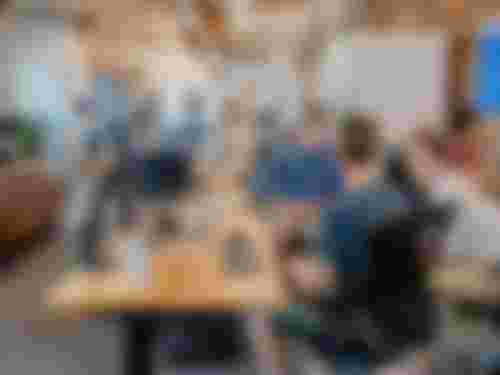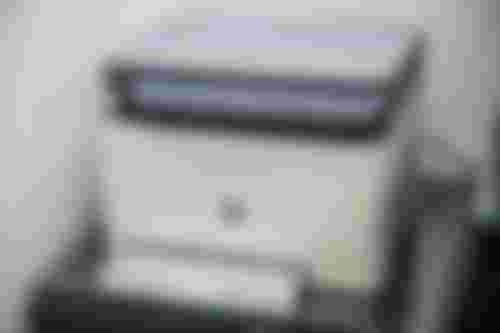Learning the basics of computer science lesson XIII
Good morning to you all @ read.cash and no doubt you had a great night rest.
Yestery, I promised to continue from where we had left off in our last computer lesson but was unable to due to my poor health conditions but I can guarantee you that I'm very fine now and good to go as well.
Today however, we shall be looking into the LCD project and other displays for an easy understanding. So, I implore you all to read along and have some fun.
The LCD Projector

Here, the demand for presentation graphics have created the room for a corresponding output devices. Graphic images can be displayed on a monitor or they can be projected into a large screen to be viewed by a group of people or an audience with the aid of a multimedia projector.
GAS Plasma Diplay
this is also called a gas panel or a plasma panel and it is another flat screen technology.
A plasma panel contains a grid of electrodes in a flat gas filled panel.
Plasma screens create a high - resolution picture by lightning up thousands of tiny dots or pixels with a high - energy electron beam.
Plasmas combine three pixel colours( red, green and blue) inorder to create the entire spectrum of colours, resulting in richer colours than the LCD or the CRT displays.
Plasma displays are often very very large screen generally used as televisions, but many plasmas can be used as computer displays though they are larger and heavier than the LCDs, and are generally considered to be only about six inches(6'inches) thick and they usually come so much light than the LCD displays.
A printer

Ever since the dawn of the computer age, producing printed output on a paper has been one of the computer's principal functions.
A printer therefore, is defined as an external hardware device which takes processed data from the computer to generate a hard copy of the data in the form of characters, symbols and perhaps, graphics on a paper.
The printed output is generally referred to as hard copy because it is relatively in a permanent form.
All PC printers have the same basic capabilities of printing graphics and charts, portraits or landscape formats and considerabely some flexibility in the size and style of printing.
The portraits and the landscape refers to the orientation of the print on the page and the portrait format is when the height is longer than the width and the landscape format is when the width is longer or larger than the height.
Printers generally can be classified by their features such as quality, font size, graphics, speed of the printing, technology and their resolution, while resolution is the amount of dots printed per square inch and at this juncture, we shall be looking at the two major printer technologies viz: the impact and the non-impact printers.
Impact Printers -
An impact printer has a mechanism resembling those of a typewriter.
It forms characters or images by striking a mechanism such as a print hammer or wheel against an inked ribbon, thereby leaving an image on the paper and what this implies is that there is a mechanical contact in between the paper and the printing head and they(impact printers) are fastly dying out due to a technological improvements and a typical example of the impact printers are the; Dot- matrix, Daisy - wheel and the Line printers
The Dot - matrix and the Daisy - wheel printers are serial character printers which means that they print one character at a time while the Line printer prints an entire line at one time and among the three types of impact printers, only the Daisy - wheel printers are capable of producing true letter - quality output on plain paper while the Dot - matrix and the Line printers require perforated, pin - fed paper to advance e forms through the paper and maintain an alignment with the print head.
Non - impact printers -
These kinds of printers are used virtually everywhere now and the reason for their general usage is because they are faster and quieter than the impact printers and they also have fewer moving parts for the r placement of the damaged ones.
They also form their characters and images without any direct physical contact between the printing mechanism and the paper and the three types of the non - impact printers that are often used are;
The ink-jet printers,
The laser printers and the
The solid ink printers.
The ink-jet printers -
This is a non impact printer mechanism that sprays one or more colour of electrically charged droplets of ink for m four nozzles through holes in a matrix at a high speed on to the paper which in turn produces a high quality print out of texts and graphics.
Its mechanism and its mechanical operation are more like that of a dot-matrix printer though, with a print head that moves back and front across the paper to write text and create an image.
This printer also produces colour printing as well as a high quality photo printing and what this means is that it also produces a variety of colours while printing at a relative low cost that is compared to the laser printer with a higher cost and they are however slower and print in a relatively lowe resolution (300-720 DPI) than the laser printers but some newly invented ink-jet printers print up to 1200 or 1400 dpi and with their high resolution output that may require the use of a specially coated paper that costs more than the regular papers.
The laser printers

This is a relatively high speed printer that uses the process that is known as electrophotography or xerography method that are used in a copier machine.
They also use static electricity to stick plastic powder(toner) on the paper and then melt it into the paper using a hot roller.
The printer uses a laser beam light source to create images on a photographic drum, then the images on the drum are treated with a magnetically charged toner and then are transferred on to the paper.
Like a dot-matrix printer, a laser printer creates images with dots whereas in a photocopying machine, these images are created on a drum which are treated within the magnetically charged ink-like toner and then are transferred from the drum to the paper.
There are a host of other reasons why the laser printers are so popular and those are by way of being able to produce a sharp and a cripsy images of both text and graphics, providing resolutions from 300 dpi up to 1200 dpi which is near a typeset quality (NTQ).
Another reason is because they are faster and quieter and they can print 4-32 text only pages per minute for individual microcomputers and more than 120 pages per minute for mainframe computers and they can also print in many font sizes.
Differences between a laser printer and an ink-jet printers.
The toner or ink in a laser printer is dry while that of the ink-jet is wet.
Overtime, an ink-jet printer is about 10 times more expensive to operate than a laser printer because ink needs replenishing more frequently.
The printed paper from an ink-jet will smear if not but a laser printed document will not.
The both types of printers operate quietly and allow fonts to be added by using font cartridges or installing soft fonts
If ones printing needs are minimal, then an ink-jet is sufficient but of one's printing volume is high, then one should consider buying a laser printer to serve one with that purpose.
Solid ink printers
These are stick of wax ink that are melted into a liquid. The ink is directed on to a drum which is similar to that of a laser printer and then transferred on to the paper in order to produce a high quality output.
Solid ink printers are mostly used as coloured office printers, at the education environment and are excellent in printing on transparencies and other one porous media.
They can also produce an excellent results and its aquisition and operating costs are similar to that of a laser printers.
Drawbacks of the technology include a high energy consumption and long warm up times from a cold state.
Also, some users complain that the resulting printers are difficult to write on as the wax tends to repel inks from pens and are difficult to feed through an automatic document feeders, but these traits have been significantly reduced in later models.
In addition, this type of printers are only available from one manufacturer - Xerox and are manufactured as part of their Xerox phaser office printer line.
Thermal printer is an inexpensive printer that works by pushing the heated pins against the heat sensitive paper and the thermal printers are widely used in calculators and fax machines.
Good morning and thank you for your time in reading this article as I wish you the most merry xmas and a happier new year in advance.

#stay free from the second wave of the deadly covid19 pandemic by obeying all government and stake holders protocols on covid19 alike so as to #stay alive.
Image credit: unsplash.com👌




This is a very mighty and powerful write-up. Thanks for the knowledge passed. More power to your elbows